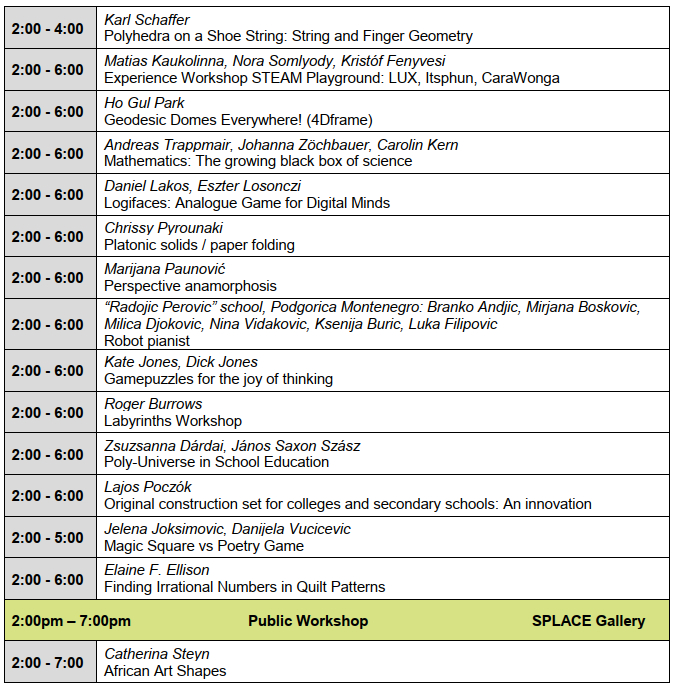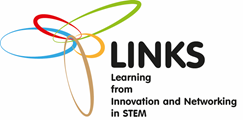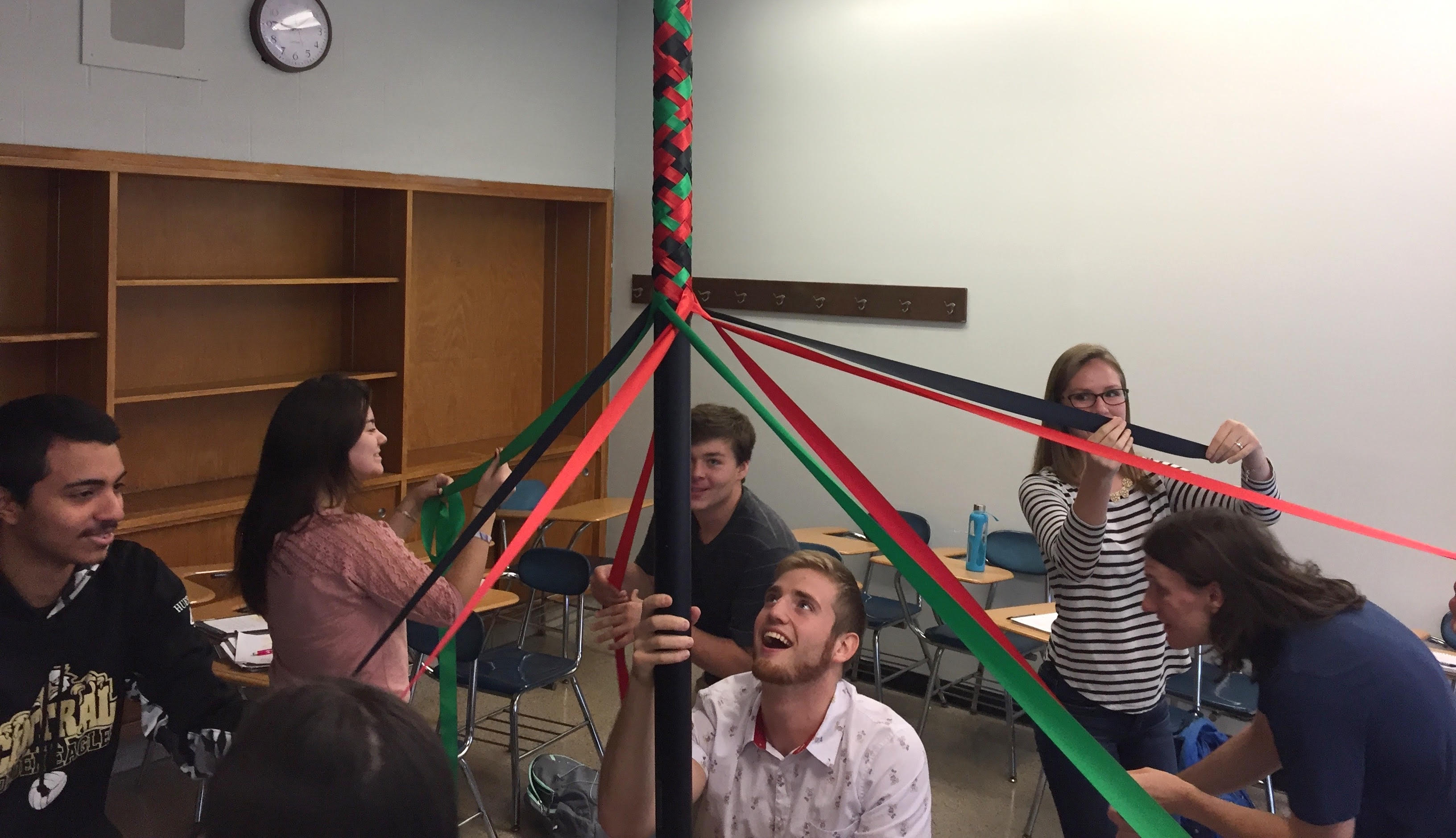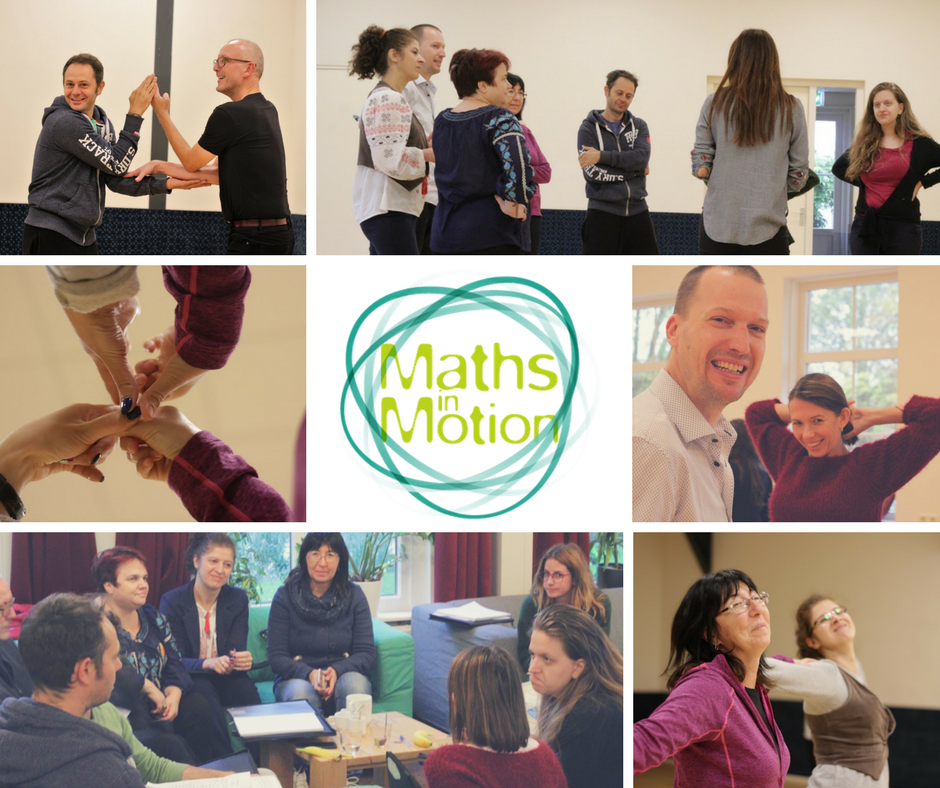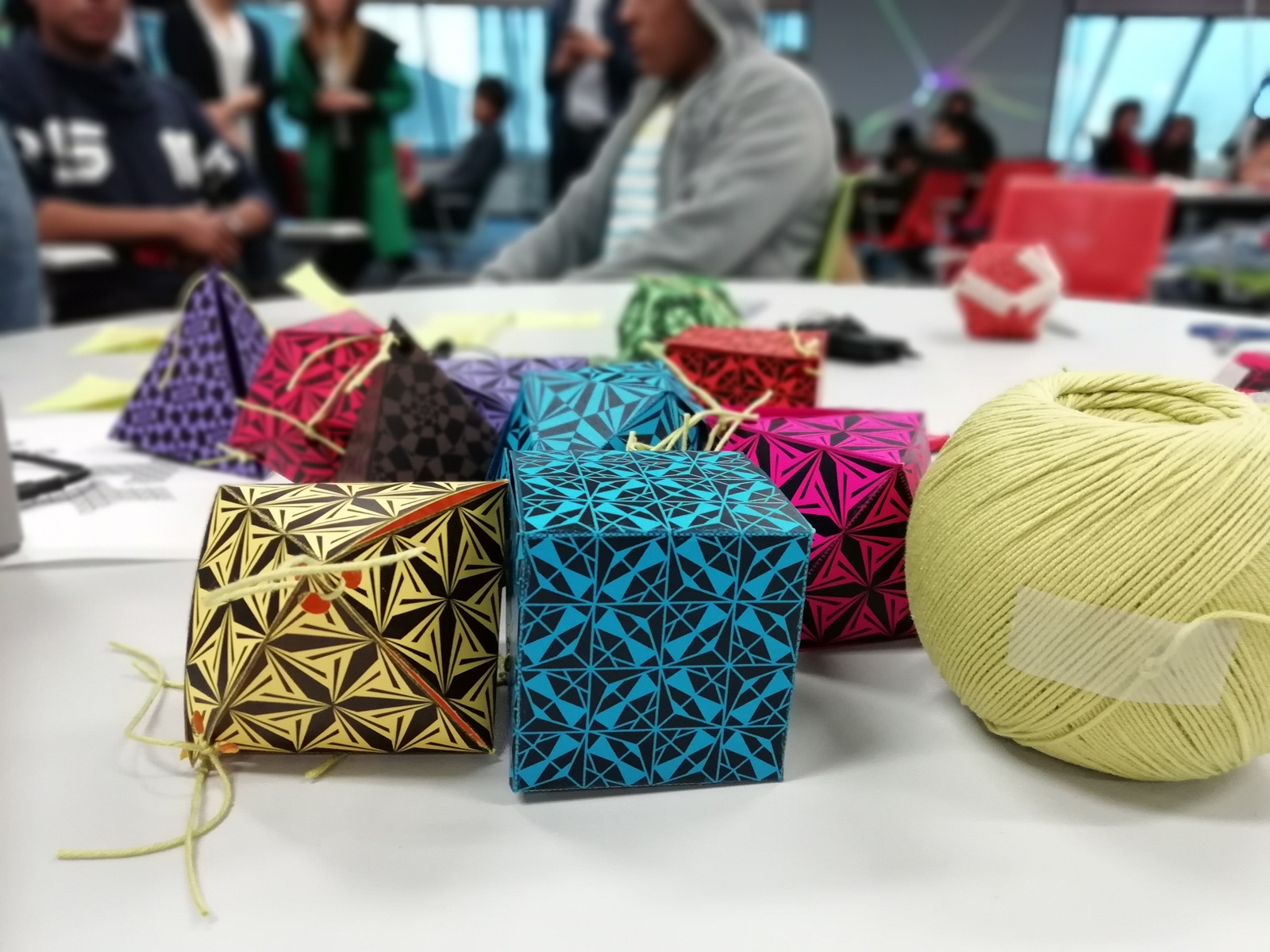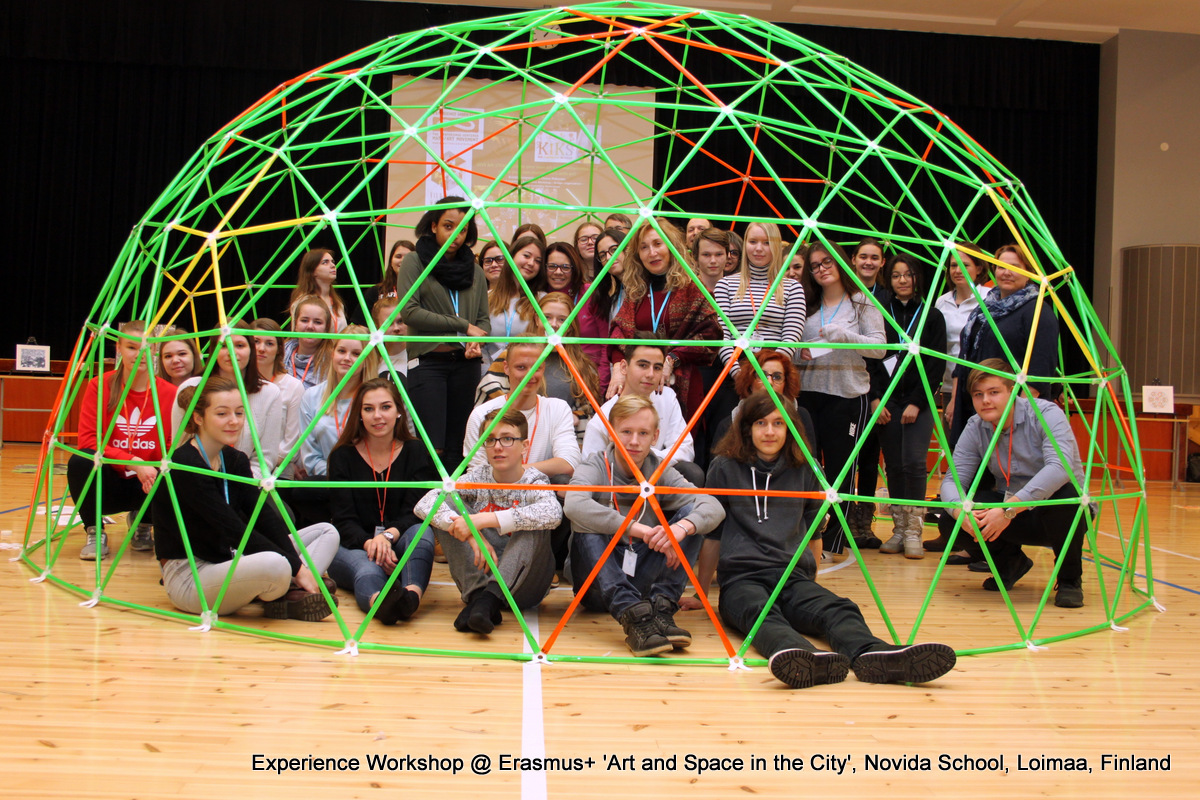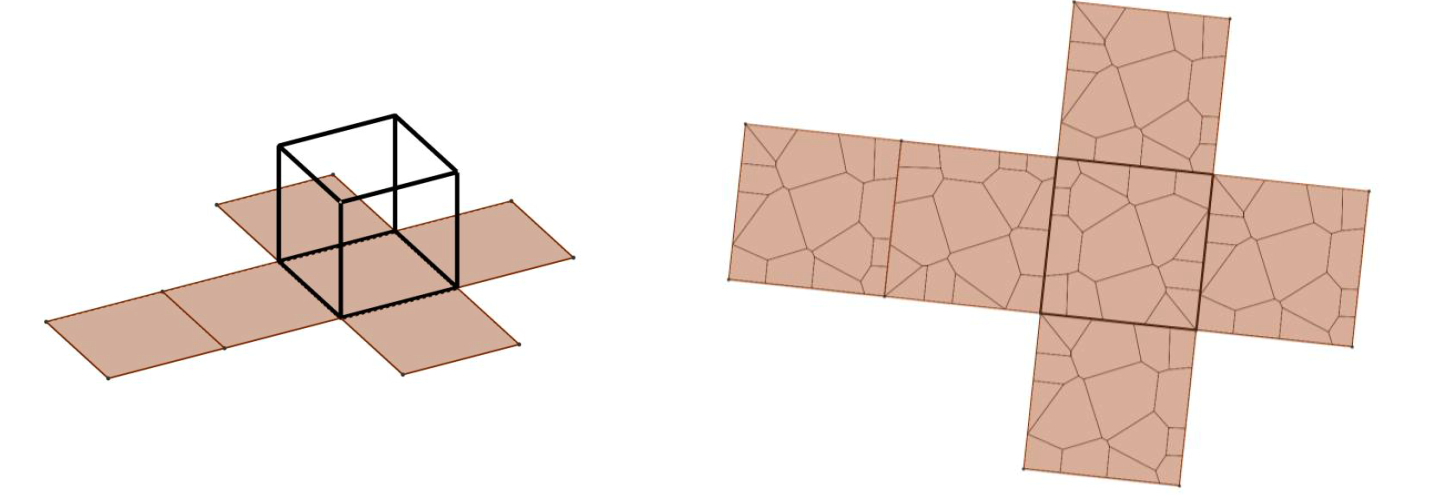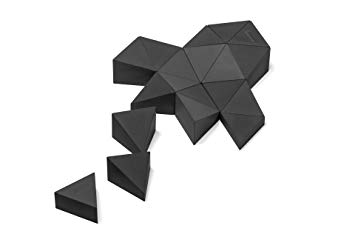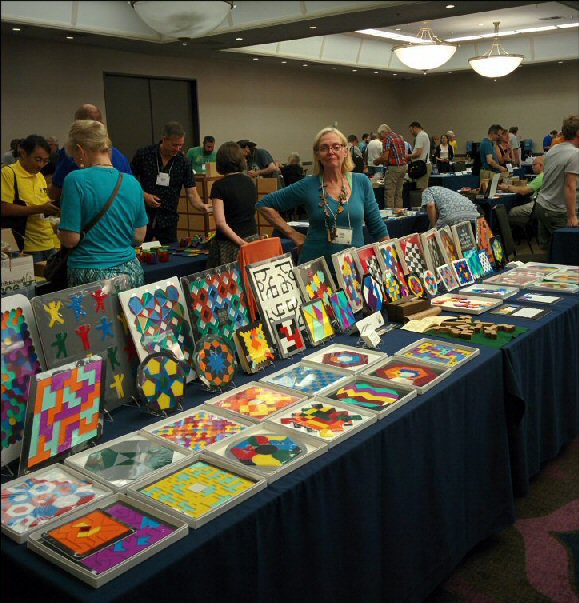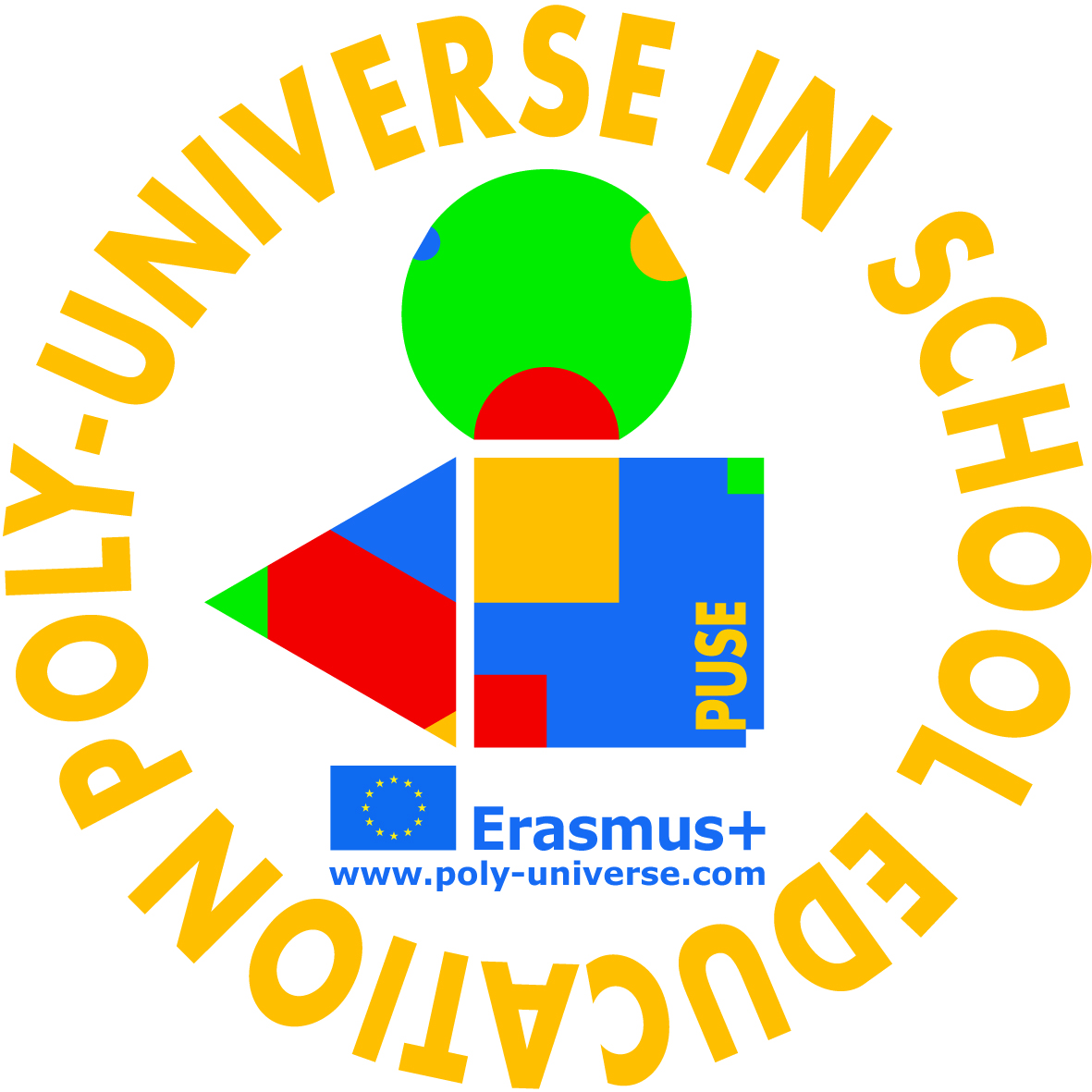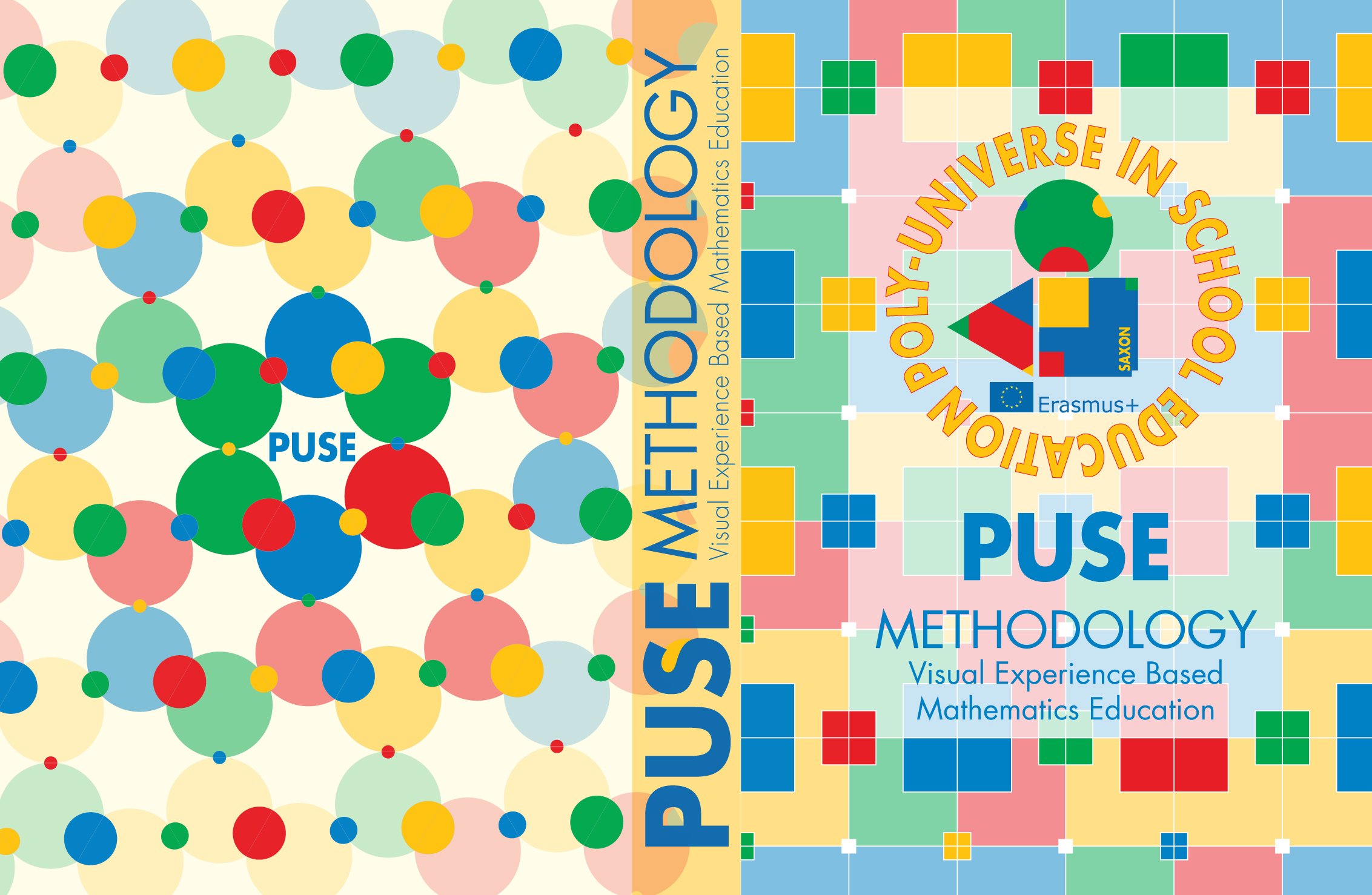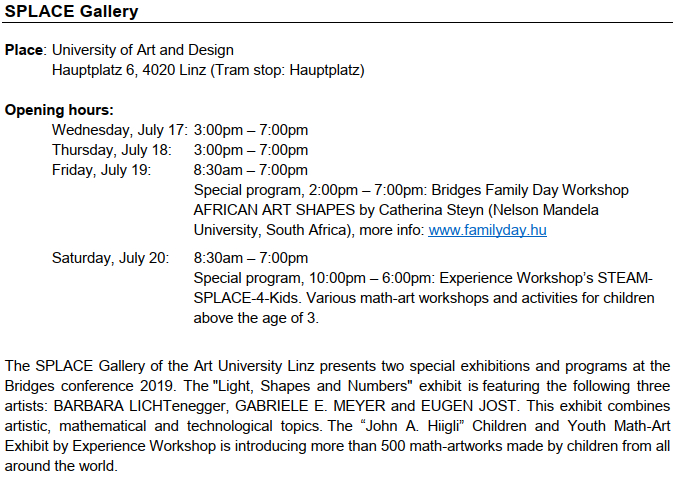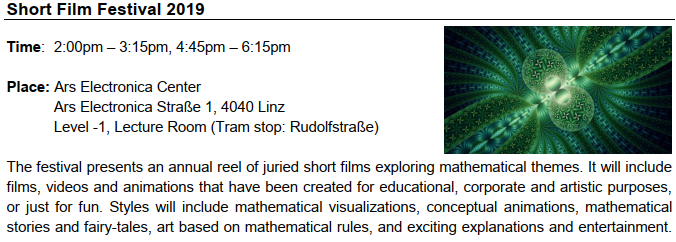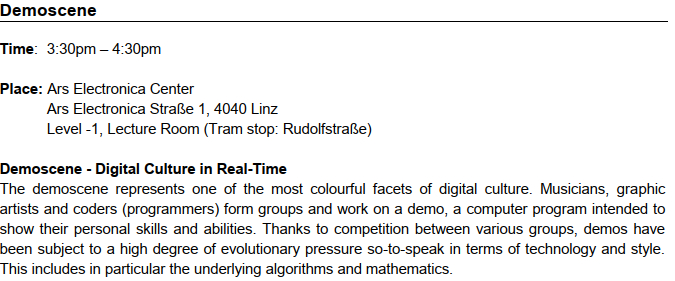Bridges Linz 2019
AUSTRIA
FAMILY DAY & MATH-ART EXPO
19 July, 2019, 14.00 – 18.00
University of Art and Design
Address: Hauptplatz 6 and 8, 4020 Linz
(Tram stop: Hauptplatz)
Welcome! Admission is free!
Questions, comments & more information:
Kristóf Fenyvesi, PhD – Director of Community Events, Bridges Organization
E-mail: familyday@bridgesmathart.org
Our goal is to offer a math-art-experience, an on-site immersion into the funworld of mathematics and arts.
Workshops and public lectures for all ages
(please scroll down for detailed descriptions)
Venue:
University of Art and Design
Address: Hauptplatz 6 and 8, 4020 Linz
(Tram stop: Hauptplatz)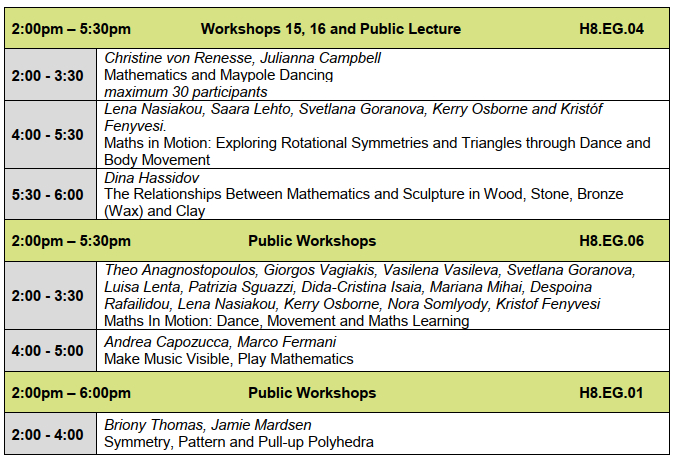
Workshop Details
Info booth for the LINKS project
https://www.fondation-lamap.org/en/links-project
Andrea Frantz-Pittner (ScienceEducation CenterGraz) and Doris Arztmann (IMST, University Klagenfurt)
The LINKS project (Learning from Innovation and Networking in STEM – science, technology, engineering and mathematics) aimed at improving inquiry-based STEM teaching through the continuing professional development (CPD) of teachers and their educators, both at primary and secondary levels. The results of the project are presented at the LINKS info-both.
14.00-16.00, H8.EG.01: Artistic Paths to Learning Math
Jena Jordahl, Julia Jordahl-Henry
www.seemath.info
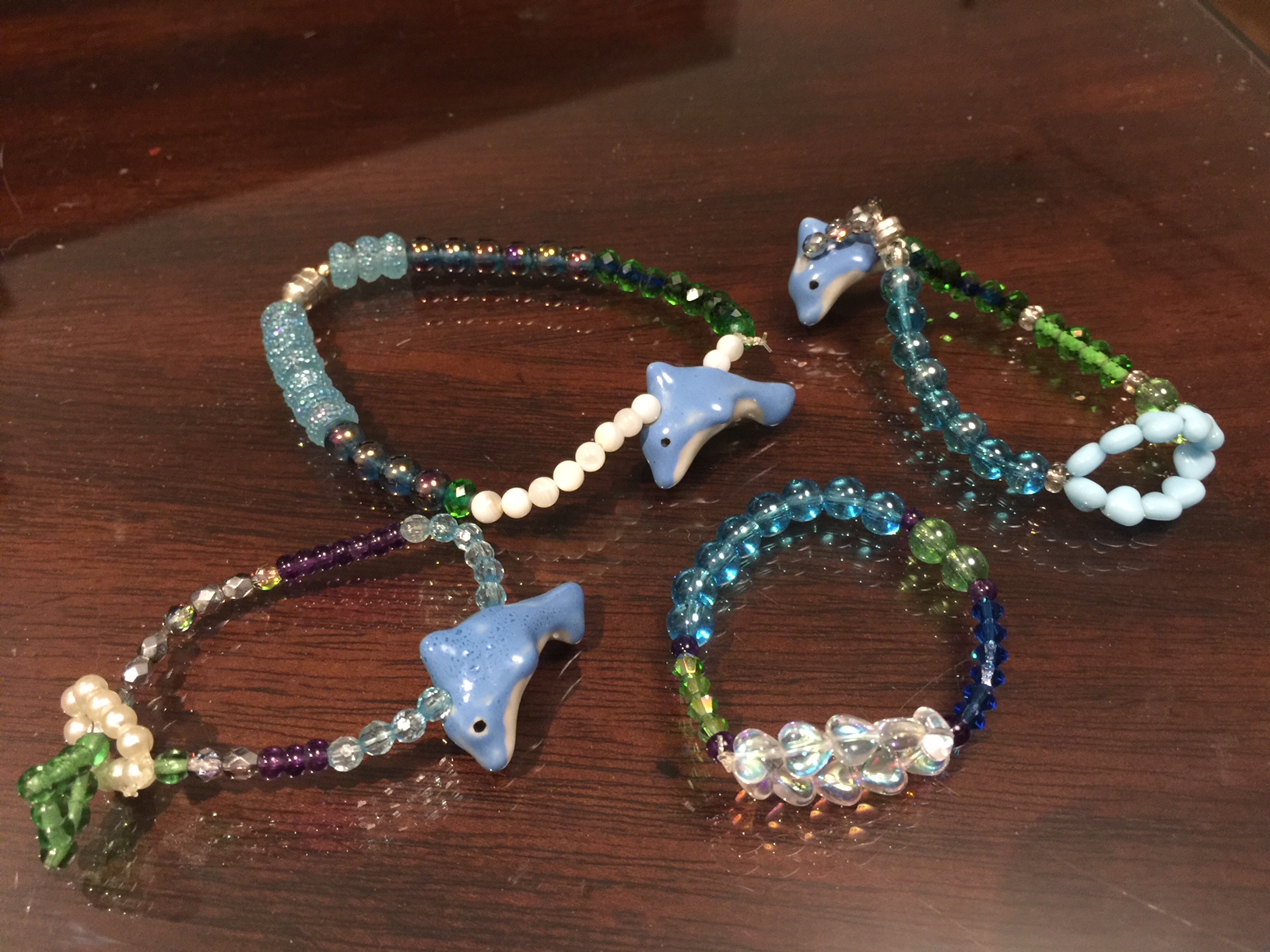
We will switch between two activities during the Expo session. Each will take about 30 minutes. One session is a story telling event where the audience member imagines themselves as a character whose name is a number. The storytelling acts out story with puppets using number bracelets. The lead character interacts with other characters, and they perform calculations together. The kids will be able to have their own bracelets to explore while they listen to the story. The second activity is a cross-between bingo and mastermind memorization games. An equation will be drawn from the raffle drum and the participants will use colorform plastic dots to cover number locations on fractal placements of a representation of the base 10 number system. For those looking for a challenge, we will provide base 16 placemats. For those looking for an easier time, we will provide base 3 placemats.
Mathematics and Maypole Dancing
Christine von Renesse, Julianna Campbell
https://www.artofmathematics.org/user
Our workshop will allow participants to explore some of the mathematics of maypole dancing. In groups of 6-10 they will dance the maypole dance, find representations of the generated patterns on the pole, and discover properties of the generated ribbon patterns. The inverse problem will also be explored: given a pattern, can we find a ribbon constellation that generates the pattern? The question becomes even more interesting if we change the traditional dance pattern.
Maths in Motion: Exploring Rotational Symmetries and Triangles through Dance and Body Movement
Lena Nasiakou, Saara Lehto, Svetlana Goranova, Kerry Osborne, and Kristóf Fenyvesi
In this workshop, we share the main results of the “Maths in Motion” (MiM) Erasmus+ educational project (2017-2019), concerning how dance and body movement can be used as tools to teach mathematics. The MiM-approach is based on embodied cognition and opens up new horizons for students, teachers, and even parents by offering simultaneous experiences with the structural, spatial, rhythmic and symbolic dimensions of mathematics through body movement. We will introduce two teaching modules developed during the project. These modules follow in the footsteps of the writing, workshops, and performances of Schaffer and Stern in the field of mathematics and dance over the past few decades. The modules guide and encourage the participants to create performance art pieces that articulate mathematical concepts.
The Relationships Between Mathematics And Sculpture In Wood, Stone, Bronze (Wax) And Clay
Dina Hassidov
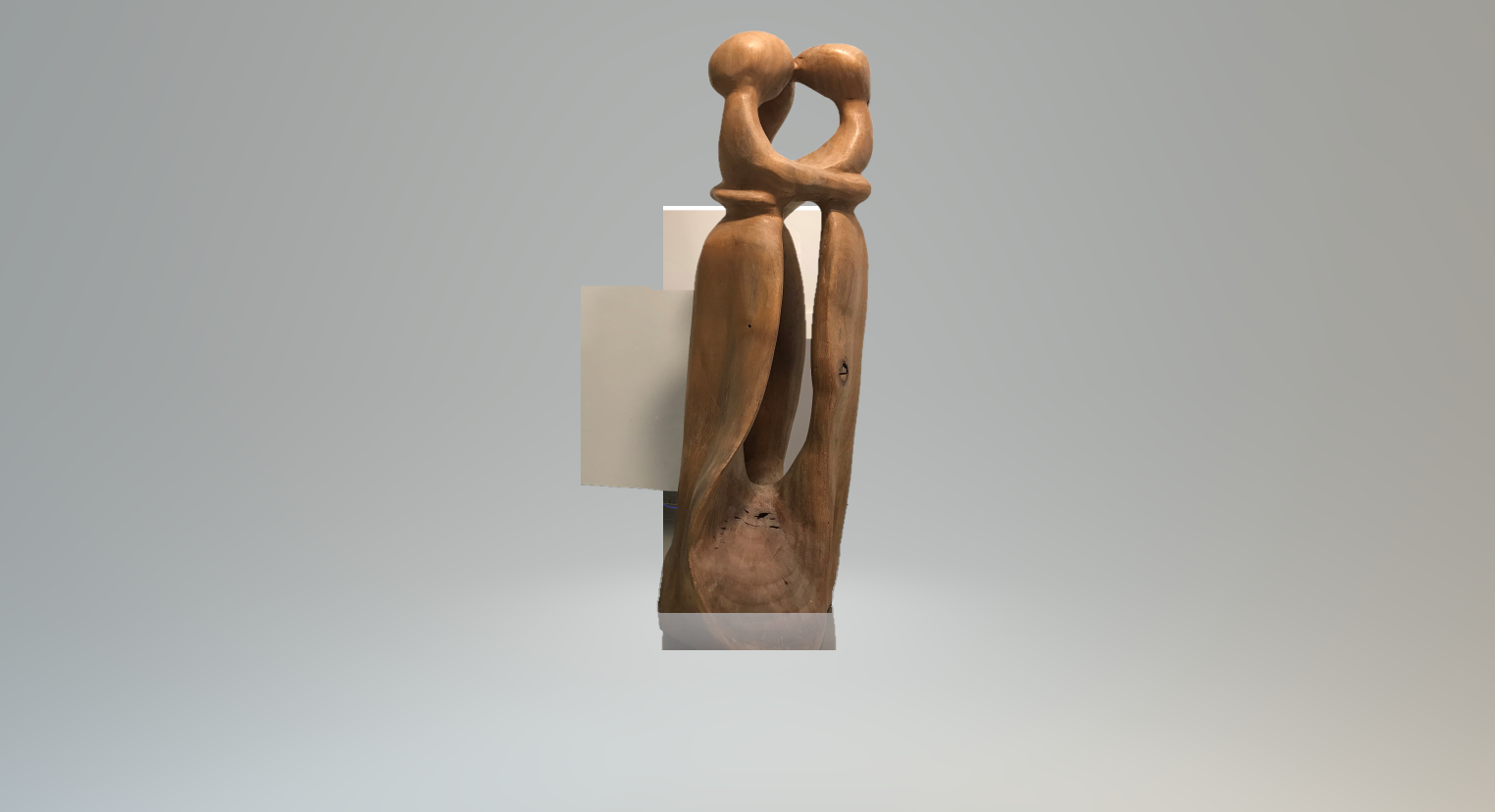
“Plastic arts” is an all-inclusive term for art in which materials are manipulated in some way. This presentation reveals the many relationships between mathematics and sculpture in wood, stone, bronze (wax) and clay. For instance, a picture used for reference must be translated from a two-dimensional image into a three-dimensional object. Sculptors often prepare numerous small models before attempting the full-size piece: they must then convert a model to the appropriate size using mathematical concepts to change the dimensions while maintaining the model’s proportion. Sculpting in wood or stone requires removing material: precise calculations allow knowing exactly how much material, and where, to remove to reach the final vision. Sculpting in bronze (wax) or clay involves adding material. Here, the mathematical activity is completely different.
There are many ancient classical theories that use mathematics to define harmony in proportion, as, for example, the 1:7 proportion between the size of the head and the body, the golden rectangle, and the Fibonacci sequence. On the other hand, some genres in art uses disproportion to emphasize artistic motives.
Art expands the mind of the sculptor and delights the soul, and mathematics serves the artist faithfully during the journey to the final product.
Maths In Motion: Dance, Movement and Maths Learning
Theo Anagnostopoulos, Giorgos Vagiakis, Vasilena Vasileva, Svetlana Goranova, Luisa Lenta, Patrizia Sguazzi, Dida-Cristina Isaia, Mariana Mihai, Despoina Rafailidou, Lena Nasiakou, Kerry Osborne, Nora Somlyody, Kristof Fenyvesi
Welcome to the “Maths in Motion” (MiM) Erasmus+ educational project (2017-2019) team’s informal workshop. You can experience how dance and body movement can be implemented to learn mathematics. Open your mind and get on the move by the structural, spatial, rhythmic and symbolic dimensions of mathematics.
Make Music Visible, Play Mathematics
Andrea Capozucca, Marco Fermani
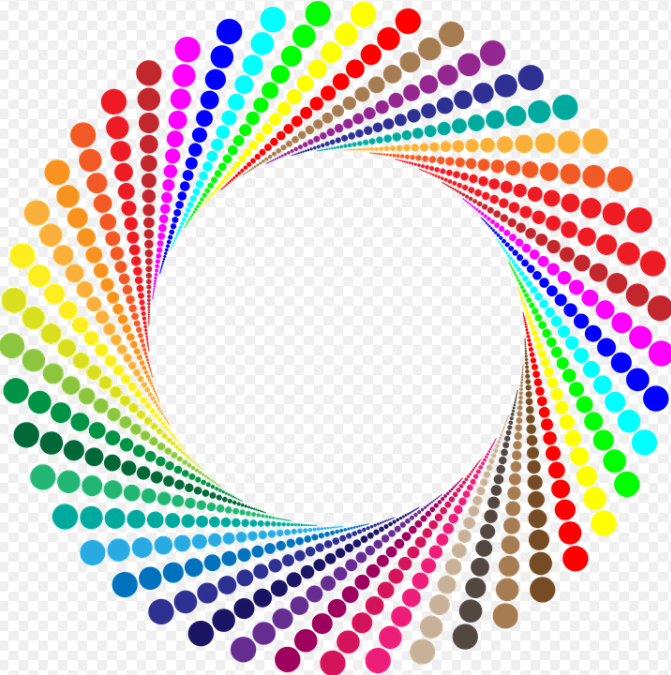
The workshop is based on interdisciplinary and interactive activities that links mathematics and music and presents mathematical and musical ideas through hands-on and visual approaches. Its goals are to encourage maths teachers to inspire students by making maths audible as well as visible, and music teachers to use a geometrical method to foster a new approach towards music theory. Participants learn how the creative discovery process can be used to form an atmosphere of experimentation and play that can positively affect people attitudes about mathematics, music and learning.
Symmetry, Pattern and Pull-up Polyhedra
Briony Thomas, Jamie Mardsen
https://engineering.leeds.ac.uk/staff/344/Dr_Briony_Thomas
Geometry is an area of mathematics that appeals to many people, particularly visual thinkers, who are often among those who either find math difficult or are disinterested in the subject. This workshop has been designed to promote the teaching of two- and three-dimensional geometry in ways that are visually stimulating for people of wide ranging abilities. The material presented within this workshop can be combines the subjects of symmetry, pattern and tessellations and shape (two- and three-dimensional). Symmetry, patterns and tessellations are first explored through a symmetry activity in which participants identify symmetries within two-dimensional patterns. This patterning is then extended to three-dimensions to creation beautiful patterned polyhedra through participants making pull-up nets, a process that requires only card, scissors and string. Participants in the workshop will have the opportunity to construct pull-up nets for the Platonic solids. Plain nets will also be provided alowing participants to decorate their own polyhedra in a follow-on activity after the workshop.
Polyhedra on a Shoe String: String and Finger Geometry
Karl Schaffer
http://www.mathdance.org/
String figures, the imaginative designs created with simple loops of string, are found among the world’s most ancient cultures, but these loops may also be used to create remarkable polyhedral structures. Participants will use loops of string to form polyhedra and other geometric designs, and morph one to another in surprising ways. Similar geometric and polyhedral designs will be created with fingers and arms, and puzzles with straw polyhedra will be presented.
Matias Kaukolinna, Nora Somlyody, Kristóf Fenyvesi
Experience Workshop STEAM Playground: LUX, Itsphun, CaraWonga and More!
www.experienceworkshop.org
Come and join to our STEAM playground and explore structures, patterns and solve design problems with your freshest ideas.
Let’s Build Geodesic Domes of All Size
Hogul Park (4Dframe) & Experience Workshop STEAM crew
We will use various size 4DFrame toolkits to experiment with “geodesic domes” of various sizes.
Mathematics: The growing black box of science
Andreas Trappmair, Johanna Zöchbauer, Carolin Kern
We present a black cube that, once opened, reveals a Voronoi pattern on its inside. Each subarea can be designed by the workshop participants to represent their individual concept of mathematics. In response to the Voronoi algorithm each participant thus becomes a generating point of his / her own mathematical concept. From the outside a complex and non-transparent, black box, mathematics itself as a human intellectual concept assembles of all the different ideas – symbolized by the entire cube.
Logifaces workshop – Analogue Game for Digital Minds
Daniel Lakos, Eszter Losonczi
www.logifaces.com
Logifaces is a logic game, a perfect combination of Math, Science and Design. The rule of the game is to build a continuous surface using all the blocks, so there is no jump between them. The most common solution is a big triangle. We have plenty different shapes offered to find solutions for, but one can also build freely and come up with new ones, meaning the game has literally endless variations. During the workshop we will provide the opportunity of the endless game experience.
Platonic solids / paper folding
Chrissy Pyrounaki
https://about.me/chrissy.pirounaki

Children can create 3D objects with paper : tetrahedron, cube, dodecahedron. They can correspond to the natural element and color thought to represent them according to Plato and prior Greek philosophers.
Perspective anamorphosis
Marijana Paunović
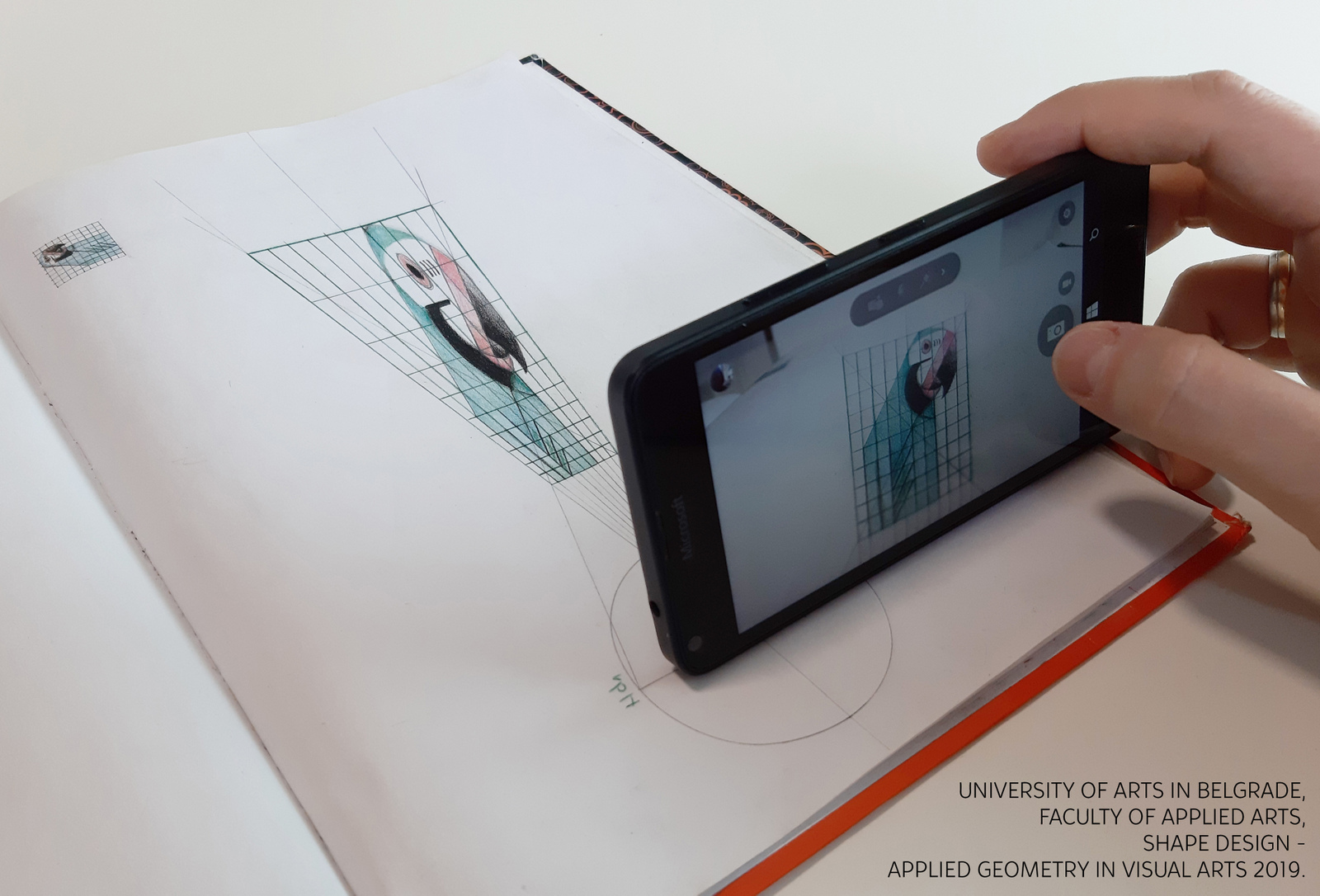
Anamorphoses are distorted images, which meaning can be perceived only from one viewpoint – center of projection. These optical illusions can be on the plane, but also three-dimensional. On this workshop participants will make there own perspective anamorphosis in the plane. The workshop will include an introduction about what anamorphoses are with examples in different fields of art and design; Explanation how perspective anamorphosis work – constructive, physiological and artistic approach. After the theoretical part, each participant will realize own design solution.
Robot pianist
Participants from school “Radojic Perovic” Podgorica Montenegro: Branko Andjic, Mirjana Boskovic, Milica Djokovic, Nina Vidakovic, Ksenija Buric, Luka Filipovic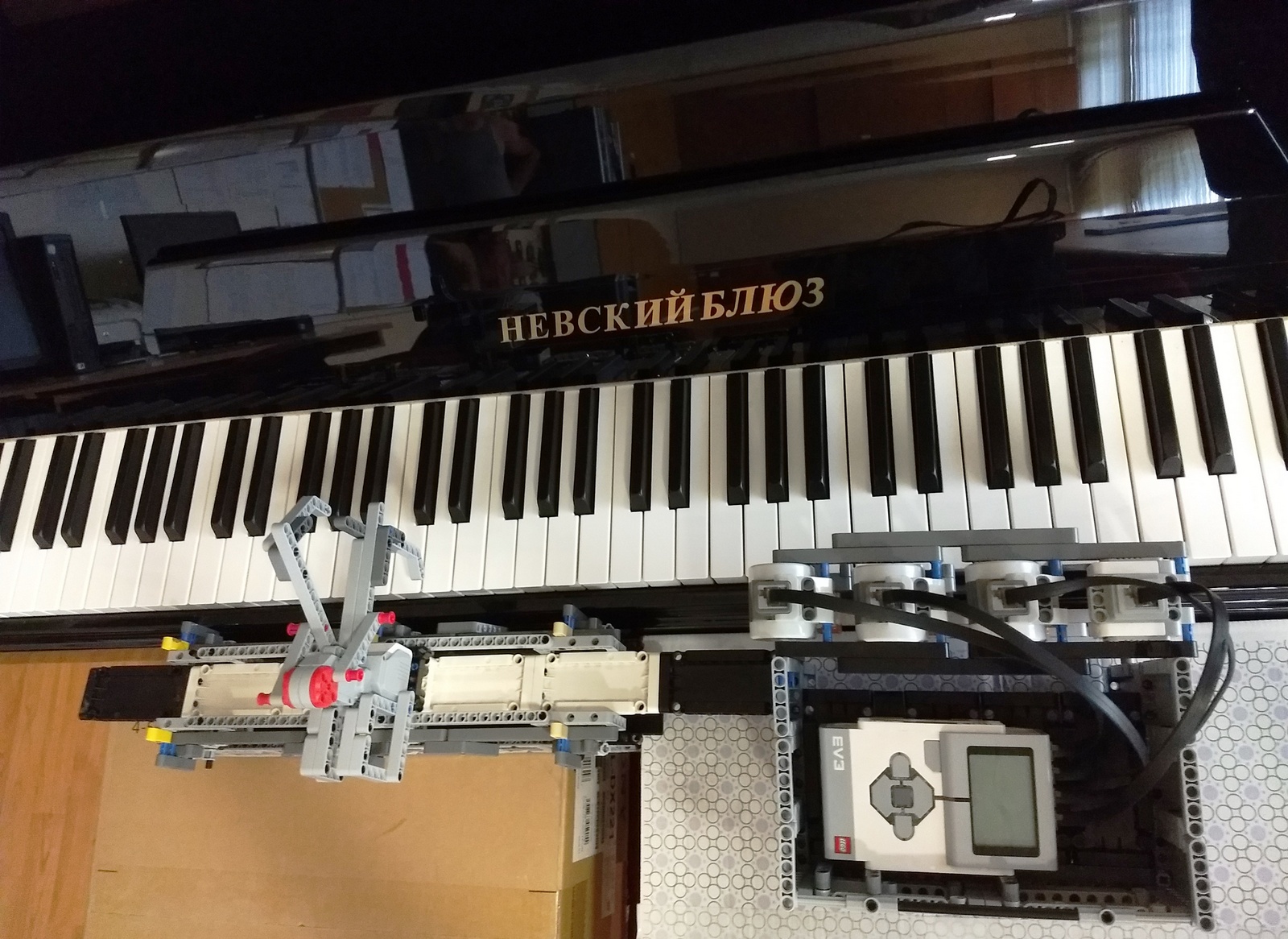
Robot pianist is a robot who is created especially for “Bridges 2019 FAMILY DAY & MATH-ART EXPO” and he is made of one NTX robotic unit and one EVE3 unit. The robot is programmed to play some melody at the piano. During the making, the robot construction students are implementing the math knowledge from geometry and construction, but during the programming of melody, students are implementing the knowledge form of art (music). During the workshop visitors (children, young people, adults) will have a chance to program their own melody and listen to how it sound. As well visitors will have a chance to create their own robot construction which could play the piano or to dance, during this activity visitors will practically implement math and art knowledge. The basic information about robot constructing and programming for visitors will be provided from students and mentors of the team at three language German; English, and Serbo-Croatian.
Gamepuzzles for the joy of thinking
Kate Jones, Dick Jones
www.gamepuzzles.com
There will be several samples of puzzles on display for visitors to solve with age-appropriate levels of challenge, for ages 3 to Ph.D. These puzzles are math-based: polyforms, edge-matching, geometric mosaics. Players become the artist by the designs they create. All puzzles have many correct solutions. We will have much discussion about art and math connections, the nature of recreational mathematics and the human mind and why puzzles are fun.
Labyrinths Workshop
Roger Burrows
‘How to Create’ Labyrinths? There are at least five methods by which labyrinths can be created from simple Neolithic labyrinths to more complex Gothic labyrinths as can be seen in Chartres Cathedral. The workshop will provide the tools and printed pages to create historical labyrinths as well as new and original labyrinths – using any one of the five methods. Younger participants can create simple labyrinths and then color them. Adults can learn the methodology of more complex labyrinths – and apply the concepts. Labyrinths, as legend would have it, have been used to trap Minotaurs. Homer describes the Daedalus labyrinth as the dancing ground of Ariadne, daughter of King Minos. Medieval manuscripts indicate that labyrinths were used to chant prayers – that they were meditative pathways symbolic of the transition from Earth to heaven.
Poly-Universe in School Education
Zsuzsanna Dárdai, János Saxon Szász
Erasmus+ PUSE’s goal was to develop a geometric-combinatorial educational method, primarily for mathematics education, based on a visual system. The outcome of the project is an educational methodology and student workbook, published both in Hungarian and in English, moreover an interactive platform, an expandable online source of exercises (www.poly-universe.com). The PUSE methodology book consists of five main thematic units: combinatorics, probability calculation; geometry, measurements; sets, logic; graphs, algorithm; complex, interdisciplinary.
Original construction set for colleges and secondary schools: An innovation
Lajos Poczók
As a member of the organization Ötlet13 Club, I take the opportunity to introduce my invention. My hobby and passion is the mathematics, and in particular the geometry of shapes.
Magic Square vs Poetry Game
Jelena Joksimovic, Danijela Vucicevic
www.cpn.rs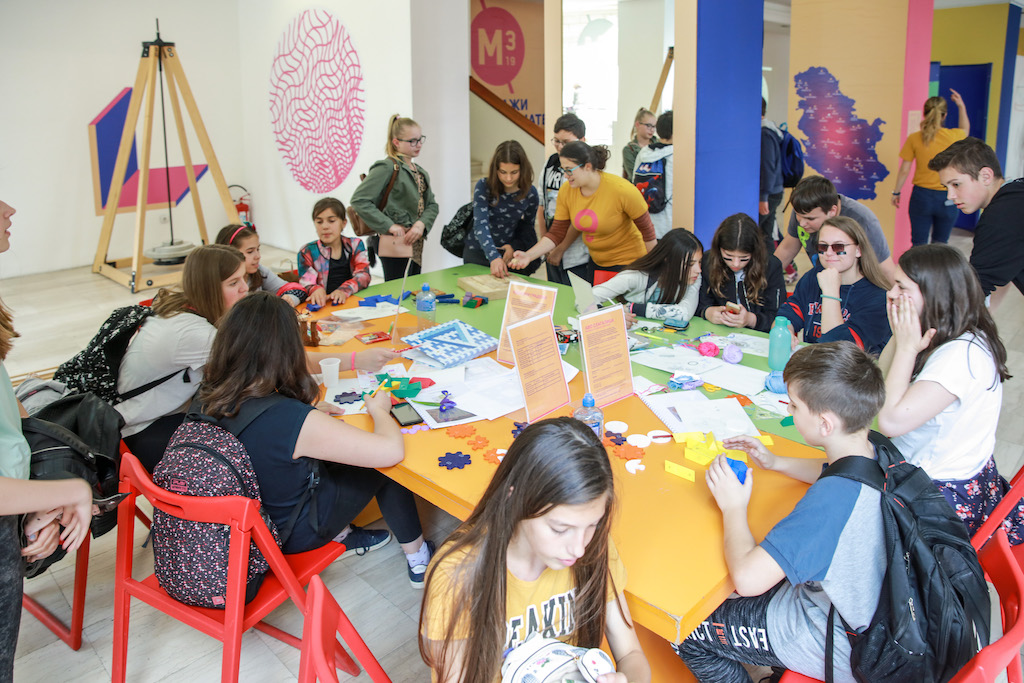
This workshop includes a game for people of all ages, can be played indoor and outdoor. The optimal number of participants is two persons per task (there are three tasks: 3×3, 4×4, 5×5) but it can also be played in larger groups. The game is played in a way that one participant stands facing the front side and the other one facing the back side of the magic square grid. This grid is made of cubes arranged in an upright square way, where each can be rotated around a vertical axe. Two sides of a cube are covered with numbers and two sides are covered with lyrics. When game is solved we get a poem on the one and the solved magic square on the other side of a grid. Two different solutions of numbers and lyrics are possible for each grid. If the magic square is not solved correctly, it will make a combination from two different poems. Third task does not include lyrics but 25 words most popular on Google at this moment. Then participants create own poems from these words. These poems can be compared to those written by software, or a poem writing generator – bot poet.
Finding Irrational Numbers in Quilt Patterns
Elaine F. Ellison
THE “JOHN A. HIIGLI” CHILDREN & YOUTH ART EXHIBIT
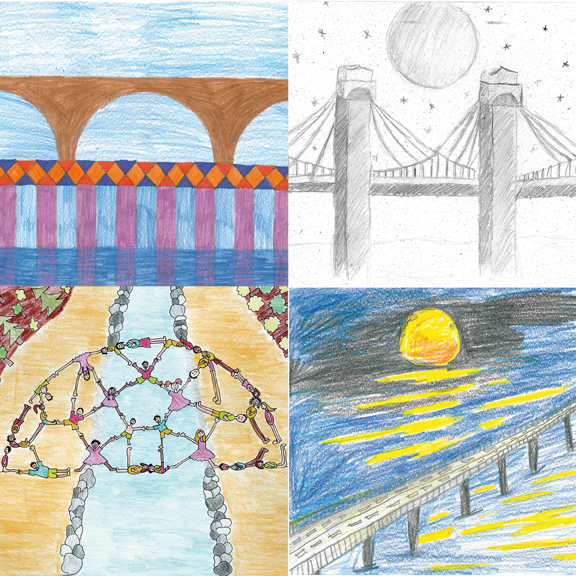

John A. Hiigli (1943-2017) and Dominique Bordereaux-Hiigli the founders of our Children Art and Youth Exhibit at Bridges Waterloo 2017. More information about John A. Hiigli
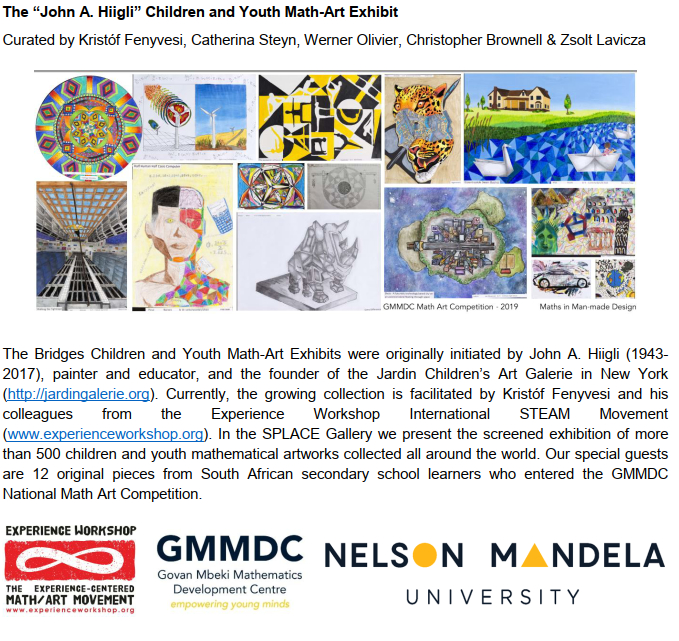
Special Contributions to the Children and Youth Art Exhibit:
- Jukka Sinnemäki and his students from Christian School of Jyväskyä, Finland
-
Tatjana Stanković, ETŠ “Nikola Tesla”, Pančevo,Serbia Nataša Lazarov, ETŠ “Nikola Tesla”, Pančevo, Serbia and their colleagues and students (primary and secondary schools, age from 10 to 19).
Depending on age students used different techniques (some painted a pattern given by teacher, some used IT tools, some draw by paint and brush or by chalk or by wooden crayons, some used collage paper, some created posters etc.).
There were held two parrallel exhibitions – in Pančevo (24.5.-31.5.2019) and in Belgrade (16.5.-31.5.2019.). -
„The birth of Universe” – childen’s drawings
George Hevesy Primary School and Sphere Workshop – Tura / Hungary
Young creators:
1. Adrienn Vajtai (10 age)
2. Andrea Csörgi (13 age)
3. Anima Balogh (14 age)
4. Anna Meleg (13 age)
5. Anna Petrovics (14 age)
6. Anna Szilágyi (12 age)
7. Bernadett Köles (13 age)
8. Boldizsár Stefán (13 age)
9. Domonkos Bangó (14 age)
10. Domonkos Bangó (14 age)
11. Enikő Bangó (14 age)
12. Eszter Kiráy (14 age)
13. Kincső Sára (14 age)
14. Kira Balogh (13 age)
15. Kővágó Laura (12 age)
16. Krisztina Albert (14 age)
17. Lili Fábián (8 age)
18. Lilla Radó (12 age)
19. Málna Lévai (11 age)
20. Milán Meleg (13 age)
21. Mira Murányi (10 age)
22. Napsugár Komlósi (13 age)
23. Noémi Nemecz (12 age)
24. Rita Bozlék (13 age)
25. Soma Sára (13 age)
26. Szilvia Csörgi (12 age)
27. Maja Tóth (13 age)
28. Szófia Murányi (8 age)
29. Zoé Berente (9 age)
30. Zsanett Balogh (13 age)
More information:
http://bridgesmathart.org/bridges-2019/2019-events/2019-short-film-festival/
19 July, 2019, Linz, Austria
More information:
http://bridgesmathart.org/bridges-2019/2019-events/2019-poetry-reading/
19 July, 2019, Linz, Austria
More information:
http://bridgesmathart.org/bridges-2019/2019-events/2019-demoscene/


